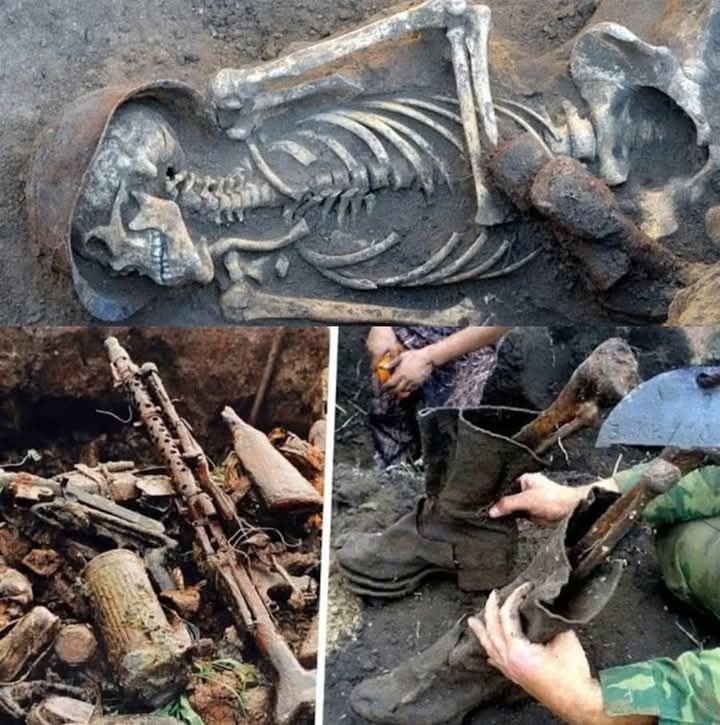AC. Unearthing History: WWII Artifacts Discovered Through Metal Detecting
The Surprising Role of Metal Detecting in Uncovering WWII Relics
The world is full of hidden treasures, many of which have remained buried for decades, waiting for the right moment to be unearthed. One such treasure trove of historical significance was revealed through the unexpected practice of metal detecting. Over the years, metal detectors have become essential tools for hobbyists, archaeologists, and history enthusiasts alike. They have helped uncover ancient artifacts, lost treasures, and, more recently, remnants from the harrowing days of World War II. The discovery of WWII artifacts through metal detecting not only provides us with tangible connections to the past but also serves as a reminder of the lives affected by the war.

The Allure of Metal Detecting
Metal detecting has been a popular hobby for decades. Whether in fields, beaches, or old battlefields, people search for anything from coins to jewelry, with a sense of adventure driving them to uncover the stories hidden beneath the earth’s surface. But metal detecting isn’t just for treasure hunters—it’s also a powerful tool used in archaeological research and for historical preservation. The growing interest in detecting historical artifacts has led to some extraordinary finds, and WWII-era objects have surfaced in increasing numbers, offering a glimpse into a turbulent period in human history.
For many, the thrill of metal detecting is not just about finding valuable objects, but about making an emotional and historical connection with the past. The items unearthed often evoke powerful emotions, as they tell stories of individuals who lived through challenging times. These stories are not just preserved in books and photographs—they come to life in the objects that remain.
WWII Artifacts Discovered Through Metal Detecting

World War II was a defining event in modern history, leaving behind a legacy of both destruction and resilience. As the war unfolded, millions of soldiers and civilians were involved in battles across the globe, many of whom left behind personal belongings that would later be rediscovered. Metal detecting has played a pivotal role in uncovering these relics, often leading to significant historical discoveries.
In various parts of Europe, for example, the remains of WWII soldiers, military equipment, and personal items such as dog tags, helmets, and firearms have been found by metal detectorists. These items, though seemingly mundane, offer crucial insights into the lives of those who lived through the war. One particularly notable discovery occurred in Normandy, France, where metal detectorists unearthed several unexploded ordnance shells, along with military insignia and personal effects belonging to soldiers who fought during the D-Day invasion.
In Germany, relic hunters have found items like Nazi-era medals, belt buckles, and even documents that offer insight into the lives of soldiers who fought on the frontlines. Similarly, in the United Kingdom, metal detectorists have uncovered a wide range of WWII artifacts, from British Army buttons to gas mask canisters, highlighting the resilience of civilians who lived through the Blitz and other bombings.
Perhaps one of the most poignant discoveries was the unearthed remains of a soldier’s personal possessions found on the battlefield. Items like pocket watches, letters, and photographs provide an intimate glimpse into the lives of those who served. Some detectorists have even uncovered diaries that soldiers kept, offering firsthand accounts of the hardships they endured.
The Historical Significance of These Finds

The artifacts discovered through metal detecting are not just random objects—they hold deep historical value. These finds allow historians, archaeologists, and educators to piece together the daily lives of those who lived during WWII. Each item tells a story, and through careful study, we gain a deeper understanding of the personal experiences of soldiers and civilians alike.
For instance, finding a soldier’s dog tag or a piece of military equipment can help pinpoint where a battle occurred or where a soldier was stationed. Sometimes, these finds can even help identify the unit or regiment that was involved in the battle. By analyzing the items, historians can reconstruct the movements of troops, understand supply chains, and even study the technology used during the war.
Moreover, these discoveries often raise awareness about the importance of preserving history. Many of the artifacts found through metal detecting are in a delicate state of preservation. Without careful handling and documentation, they could easily be lost to time. That’s why many detectorists work with local museums, historical societies, and government agencies to ensure the items are properly recorded and preserved for future generations.
The Ethics of Metal Detecting and Preservation

As with any treasure hunt, there are ethical considerations surrounding metal detecting. The primary concern is the preservation of historical sites and the impact that digging and unearthing artifacts can have on archaeological integrity. Many countries and regions have laws in place to regulate metal detecting and ensure that finds are properly recorded. For instance, in the UK, metal detecting on protected archaeological sites is illegal without a permit. Metal detectorists are encouraged to report their finds to the relevant authorities, who can help ensure the items are preserved and studied appropriately.
Ethical metal detecting also involves respecting the memory of those who lived and died during the war. Many detectorists take care to approach their discoveries with reverence, treating each find as a connection to history. It’s not just about finding valuable items—it’s about preserving the legacy of the past.
The Role of Metal Detecting in Education and Public Awareness
The increasing number of WWII artifacts being uncovered has also sparked a renewed interest in history, particularly among younger generations. These items are often displayed in local museums, where they serve as tangible connections to the past. Visitors can learn about the war through the objects that were left behind, offering a more personal and visceral understanding of the conflict.
Additionally, these finds often encourage public discussions about the consequences of war and the importance of remembering history. By preserving and sharing these objects, metal detecting helps ensure that future generations will learn about the sacrifices made by those who lived through WWII.
Conclusion: Metal Detecting as a Link to the Past
The discovery of WWII artifacts through metal detecting serves as a powerful reminder of the past. These finds offer us a direct connection to the people who lived through one of the most defining conflicts in human history. By unearthing personal belongings, weapons, and tools from the war, metal detectorists help us understand the daily lives of soldiers and civilians alike, while also preserving the memory of the events that shaped the world.
Whether it’s a soldier’s dog tag, a piece of military equipment, or a personal letter, each artifact tells a story that adds to our understanding of WWII. And as long as metal detecting continues, we may continue to uncover more of the forgotten history that lies buried beneath our feet. By respecting the ethical guidelines and working with experts, metal detectorists play a crucial role in preserving this history and ensuring that the lessons of the past are never forgotten.













